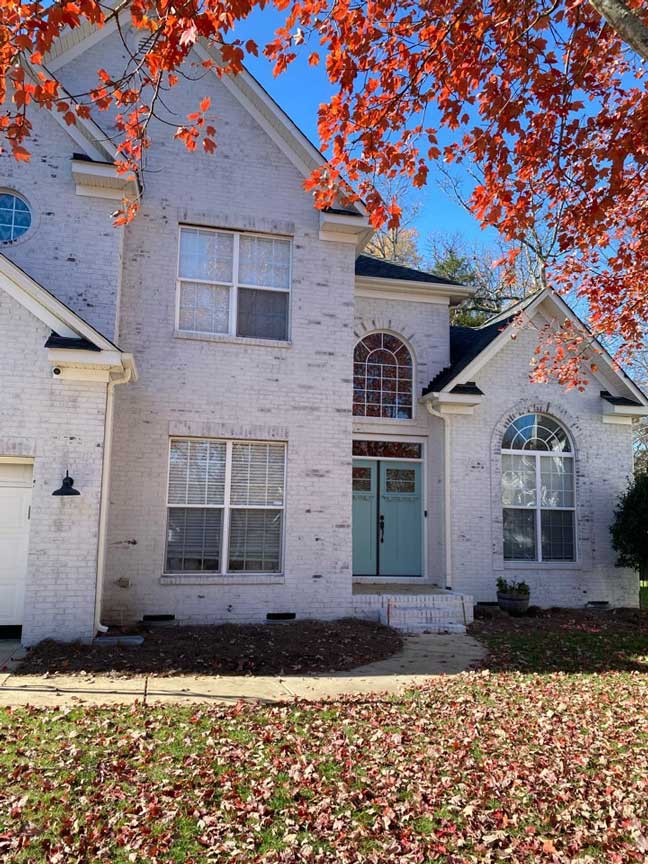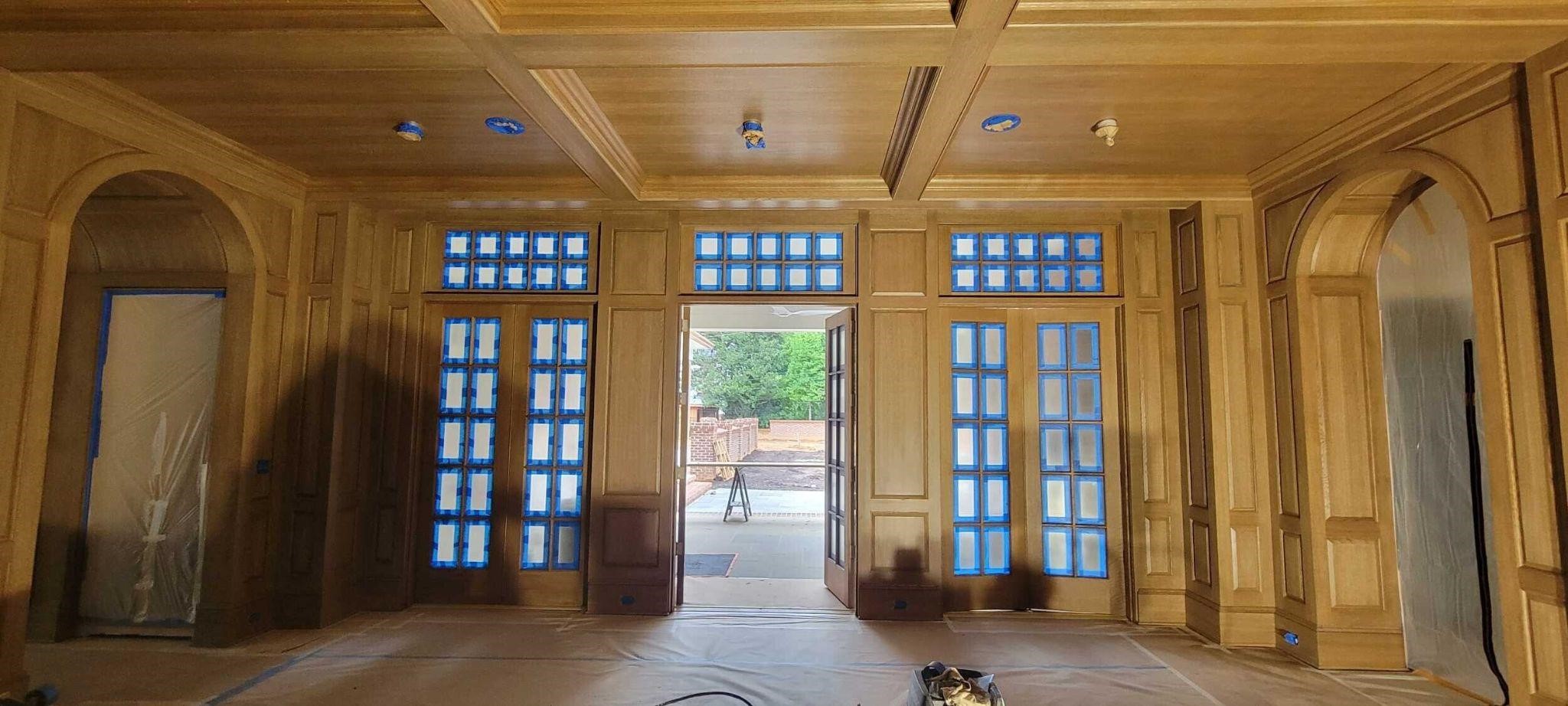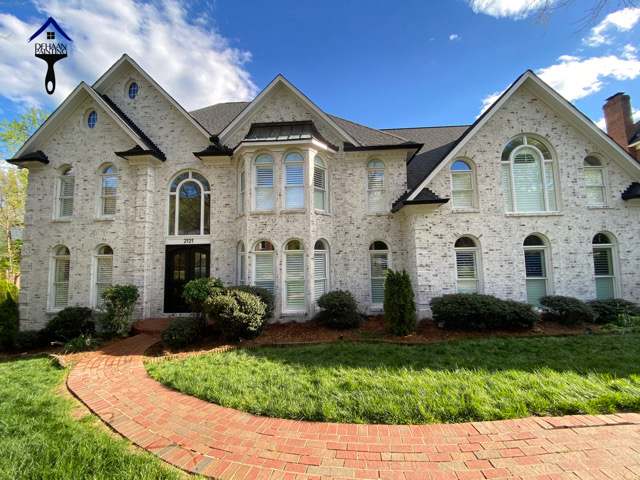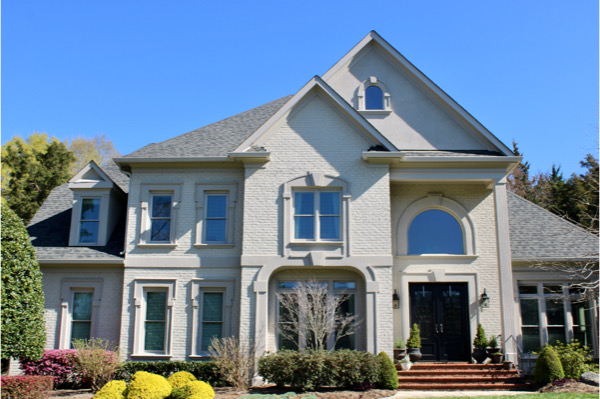When it comes to painting the exterior of your house, selecting the right type of paint can be overwhelming with so many options available. Two popular choices that are often used for historic or traditional homes are whitewash and limewash. While they may sound similar, there are key differences between the two. In this blog, we will compare whitewash and limewash for exterior house painting, exploring their characteristics, benefits, and drawbacks.

Image sourced from "Kristen Rinn Design"
Whitewash, as the name suggests, is a type of paint that creates a white, translucent finish on surfaces. It’s typically made by mixing water, latex paint, and pigment. Whitewash has been used for centuries and is known for its traditional and rustic look and is commonly used on porous surfaces like brick, wood or stucco. Whitewash provides a matte finish and allows the texture of the underlying surface to show through, giving a unique and weathered appearance. Unfortunately, whitewash is prone to chipping, peeling and mold/mildew growth as the technique of mixing water and paint reduces the quality of paint.
On the other hand, limewash is a type of paint that is made from slaked lime, water, and pigments. Unlike whitewash, which only creates a translucent finish, limewash can create a translucent or opaque finish that allows the texture of the underlying surface to show through. Limewash has a softer, more chalky appearance compared to whitewash, and it can be used on a variety of surfaces including brick, stucco, wood, and plaster. It’s also known for its breathability, as it allows moisture to evaporate from the surface, making it suitable for historic or older homes where moisture management is crucial. Due to the high alkali of limewash, its more resistant to mold/mildew which is a major plus in homes where moisture tends to build up. Limewash is renowned for its longevity and durability; meaning you won’t have to worry about your exterior paint job for many years to come.
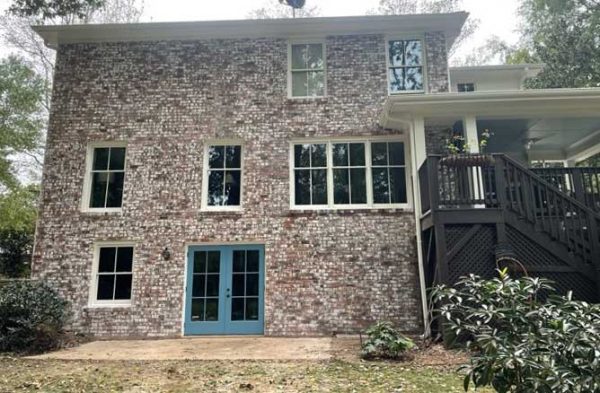

On the other hand, limewash is a type of paint that is made from slaked lime, water, and pigments. Unlike whitewash, which only creates a translucent finish, limewash can create a translucent or opaque finish that allows the texture of the underlying surface to show through. Limewash has a softer, more chalky appearance compared to whitewash, and it can be used on a variety of surfaces including brick, stucco, wood, and plaster. It’s also known for its breathability, as it allows moisture to evaporate from the surface, making it suitable for historic or older homes where moisture management is crucial. Due to the high alkali of limewash, its more resistant to mold/mildew which is a major plus in homes where moisture tends to build up. Limewash is renowned for its longevity and durability; meaning you won’t have to worry about your exterior paint job for many years to come.
Both whitewash and limewash have their benefits. Whitewash is super DIY friendly as you can use any latex paint and some water. Limewash is environmentally friendly, as its are made from natural materials that do not contain harmful chemicals. Whitewash and limewash are both timeless techniques that can make your home look beautiful and rustic–– however, there are also some drawbacks to consider.

Image sourced from "Two Brothers Painting"
Whitewash, being diluted paint, may not provide the desired level of coverage for surfaces with stains or discoloration. It may also require more frequent maintenance, as it can chip or peel over time. Limewash, on the other hand, requires more expertise to apply correctly, as it has a thinner consistency and may require multiple coats for proper coverage. While expertise is still required, limewash tends to be a bit more flexible when it comes to coverage than whitewash. You can apply multiple layers of limewash and retain the texture of your surface. However, with whitewash, multiple layers can end up looking like painted instead of the distressed look you were aiming for. Additionally, limewash tends to be more expensive compared to whitewash, as it’s made from slaked lime, which can be costly.
In conclusion, whitewash and limewash are two traditional types of paint that are commonly used for exterior house painting, particularly on historic or traditional homes. Both have their unique characteristics, benefits, and drawbacks. The choice between the two ultimately depends on personal preference, the desired aesthetic, and the specific needs of the project. Whether you opt for the translucent, rustic look of whitewash or the flexible, varying appearance of limewash, both can provide a beautiful and durable finish for your home’s exterior. Consult with a professional painter to help you make an informed decision based on your specific requirements.
Need Something Painted?
DeHaan Painting would love to help take the task of painting off your mind, but out schedule fills up fast. As the weather continues to warm up, it’s a great time to start planning your exterior projects. Don’t wait, act now and book with us!

Helping Thousands of Families in Plaza Midwood, Noda, Chantilly, Dilworth, Elizabeth, Myers Park, South Park, Barclay Downs and Surrounding Areas.
DeHaan Painting
“Charlotte’s Premier Painter”
Interior House Painting – Exterior House Painting – Kitchen Cabinet Painting – Limewash Applications – Commercial Painting
Phone: (980) 224-3191
Email: info@dehaanpaints.com

